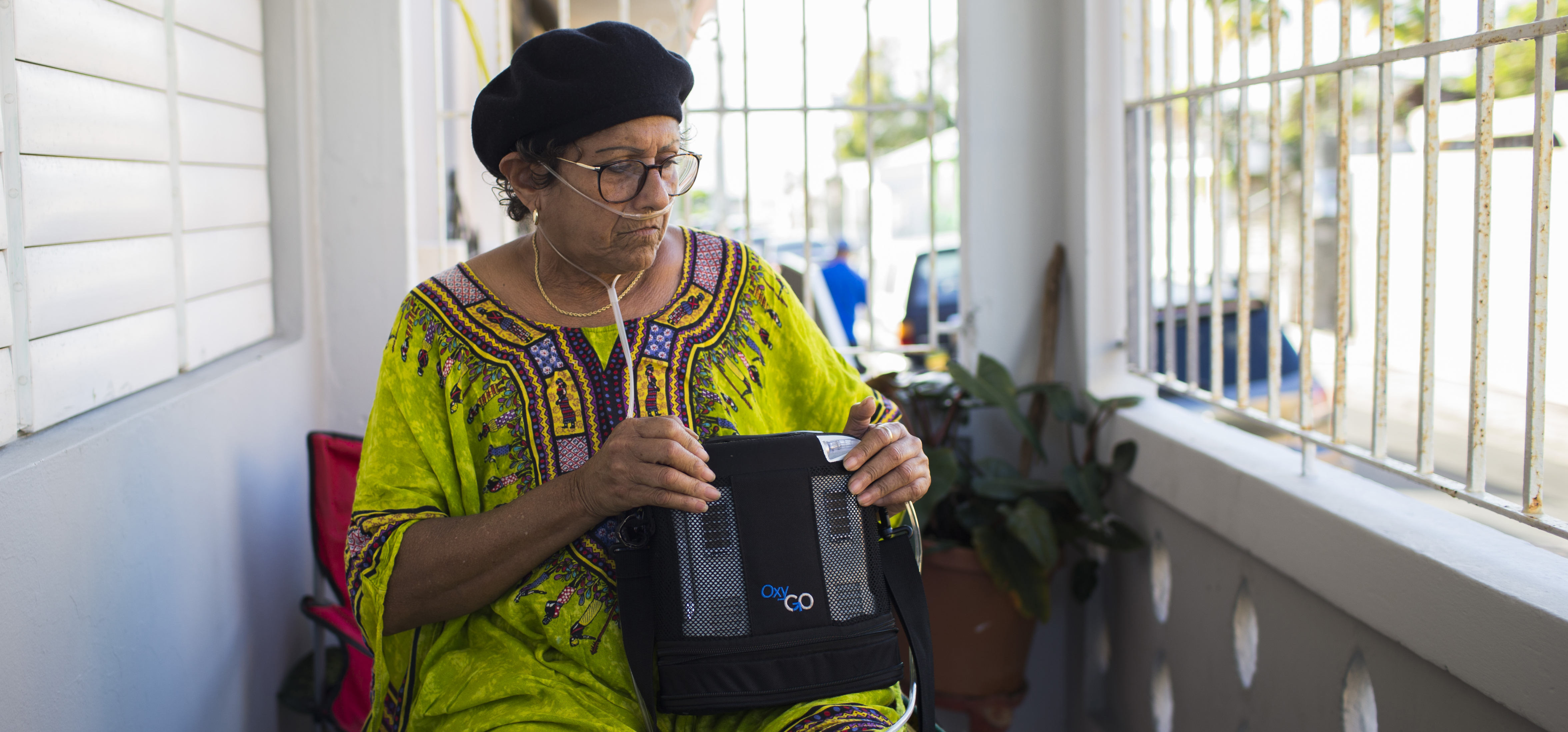
<p>Sylvia Velez, a cancer patient at her house in Vieques, PR. Velez depends on oxygen 24 hours a day because of her pulmonary fibrosis. (Photo by Dennis M. Rivera Pichardo)</p>
Each year, millions of American workers experience new, potentially work-limiting health shocks, such as cancer, stroke, or mental illness. Some workers manage their conditions without leaving the workforce, but a significant portion leave their jobs and experience income loss and instability.
Much of the disability policy literature assumes that workers who experience new health shocks and leave the labor force are on a path to receiving Social Security Disability Insurance (SSDI) benefits. But in a new report, we find that years after a new health shock, many people who left the workforce receive no government assistance, despite experiencing a significant decline in economic status.
What happens to workers who experience a work-limiting health shock?
Using the 2005–15 waves of the Panel Study of Income Dynamics, a longitudinal survey conducted every other year, we find that each year, on average, 4.2 percent of workers ages 18 to 62 report a new work-limiting health condition or a new major health shock, including heart or lung issues, stroke, cancer, memory loss, or psychiatric problems.
Generally, these workers are older, more likely to be female, and less educated, and they have lower incomes and work in blue-collar or service jobs that offer fewer benefits. And although these workers are more likely to experience health shocks later in their careers, about one-third of workers in the sample experienced a new health shock by age 40.
Within two years of experiencing a major health shock, workers were three times more likely to leave the labor force as workers who did not experience a health shock. Most of the workers who have not retired are not receiving any public income benefit. We find that even six years after experiencing a new work-limiting health shock and leaving the labor force, more than one-third are not receiving government income assistance, neither through SSDI nor other programs. Women are more likely to experience a new work-limiting health shock and to leave the labor force without receiving public assistance in the form of SSDI or other benefits.
Experiencing a health shock has consequences for employment. Our analysis shows that after six years, workers experiencing a health shock were 22 percentage points more likely to leave the labor force and 24 percentage points less likely to work full time compared with workers overall. Yet most workers who experienced a health shock were working six years after falling ill—62 percent were in the labor force and 52 percent were working full time.
Because of income loss and a lack of public assistance, workers experiencing new health shocks face an increased risk of falling below the federal poverty level. We found that the share of full-time workers with new work-limiting health conditions who have incomes below the federal poverty level almost doubles within two years following the onset of their health issues. The economic status of those receiving public assistance stabilizes over time, while it erodes over time for those not receiving public assistance.
What does this mean for disability programs and policies?
Over the past several decades, much of the academic literature relating to disability policy has focused on understanding the growth in the SSDI program and policies to improve its finances. Since 2011, SSDI applications and awards have dropped substantially. The SSDI trust fund is now expected to have reserves until 2052.
But our analysis indicates that further research is needed to better understand why public social insurance and safety net programs fail to assist so many workers who experience a health shock that may drive them out of the workforce. Eligibility rules for SSDI may be too restrictive to adequately protect some at-risk workers, or the determination process may be too daunting, discouraging some eligible workers from applying.
These findings show that further government investment in programs to help intervene soon after a worker has a new serious illness or injury may be effective and beneficial for those who leave the labor force and do not receive public assistance. These efforts to encourage work participation among injured workers should be complemented with a strengthened safety net for those whose condition prevents them from engaging in substantial gainful employment.
Let’s build a future where everyone, everywhere has the opportunity and power to thrive
Urban is more determined than ever to partner with changemakers to unlock opportunities that give people across the country a fair shot at reaching their fullest potential. Invest in Urban to power this type of work.